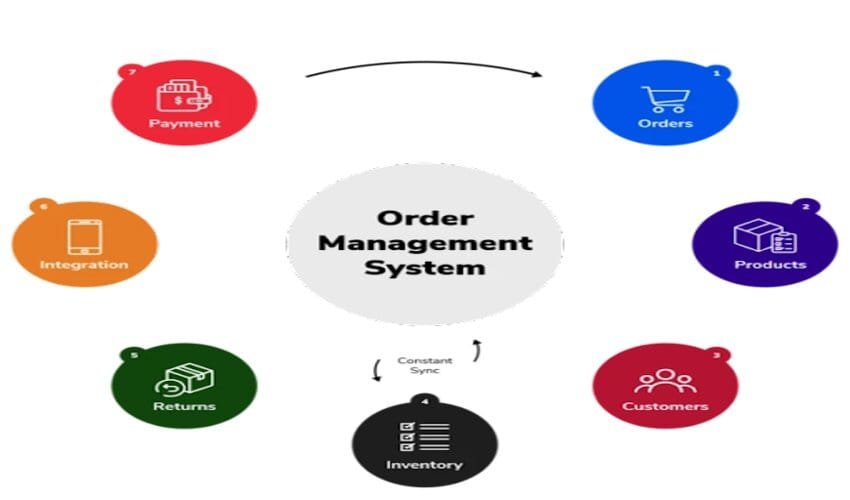Businesses have acknowledged the necessity of digital innovation to create outstanding retail consumer experiences in the aftermath of the pandemic and challenges with the global supply chain. Retailers, however, are unable to fulfill order commitments without accurate real-time views of inventory, shipments, and automated order orchestration procedures.
Businesses want reliable order management systems (OMS) that can improve fulfillment profitability, boost customer happiness, and enable new digital and physical client interactions. These solutions need to support long-term sustainable supply chain plans while also enabling organizations to swiftly pivot in order to assist consumers. They also need to offer a strong data foundation and transparency at scale.
Freedom of choice is the key to solving these problems. Platforms for order management must provide companies choices that enable flexibility and agility in capabilities and implementation. Additionally, they must have the flexibility to adapt and grow as consumer trends and demographics change. In the end, OMS freedom of choice optimizes supply chain value and improves the shopping experience for consumers in stores.
IBM has introduced a number of new platform upgrades that support our clients’ freedom of choice by encouraging agility, accessibility, inclusiveness, and flexibility.
Prescriptive paths in our providing roadmap give clients flexibility of choice when choosing capabilities to meet certain demands and bring about desired advantages.
1. Innovation in User Experiences
Solutions for order management must be simple to use, friendly, and simple to understand without requiring substantial training or specialist knowledge. We began by analyzing our users, their business environment, and their processes using IBM Enterprise Design Thinking as our framework. Then, utilizing the acclaimed Carbon Design System to create user-friendly interfaces, we iterated with our sponsor users to gain input in order to improve their UI experience.
Our updated user interface organizes fundamental linked actions into sections that are structured by a progression from insights to analysis to action. Users should be able to dive down into data points to see an analysis of business KPIs that offer insights into business operations and take instant action after viewing them on a dashboard. For instance, a fulfillment manager should be able to easily dig down into store-level information if they see that the dashboard indicates an increase in the fulfillment time for ship-from-store orders at stores in the Midwest US area. This allows them to pinpoint particular stores for which they ought to suspend new orders in order to give store employees time to finish off their backlog of open orders.
By allowing business users to easily design their workspaces to reflect their jobs, responsibilities, and working styles using drag-and-drop carbon components, our new user interfaces employ low code/no code models. All of this correlates to quicker agility and speedier UI development to effectively and efficiently satisfy client expectations. Additionally, UIs are freed to employ micro-frontend architecture that is independent from the main application by leveraging contemporary technological components like Angular, Lerna, and Single-spa. This enables quicker deployment and version-free upgrades that take only minutes.
Finally, by utilizing open-source technology, our solution is also created to be usable and welcoming for people with disabilities.
2. Flexibility in deployment choices
An OMS platform should offer users as much freedom and flexibility in how they engage with it as possible. Modernized platforms must also be simple for organizations to embrace without needing them to dramatically change their architecture and run the risk of upsetting regular operations.
We have used a micro services-based API-first approach to building a composable OMS architecture to accommodate this freedom and flexibility. As a result, the time to value deploying our solutions is significantly decreased since businesses may integrate their existing systems. A cloud-native development methodology enables the modular components to be delivered utilizing all SaaS, private, or public clouds, and is developed in a headless design that can be combined with any UI. This is known as My Cloud. Cloud you. Every Cloud.
The majority of alternative OMS solution alternatives have a single go-forward deployment approach, which invariably places constraints on clients when they grow in terms of revenue, location, or acquisition. For instance, using our technology, a customer may set up a SaaS model in North America while still opting to use a public cloud option there to comply with local regulations. Alternatively, they may begin with a SaaS model and eventually switch everything over to a self-managed model on a public cloud of their choosing.
3. Transparency and Trust in AI and ML adoption
Because using technology to make business decisions is a free option, users must already have confidence in these solutions when making their own choices. This is crucial when an AI or machine learning solution is being used since these technologies have historically operated in a dark box, leaving consumers with a high level of mistrust in the insights or suggestions produced. Long-term, this persistent lack of confidence fosters a culture of unproductive decision-making that turns back the AI suggestions that may have a significant impact.
Transparency is a core value that permeates every aspect of our design to assure user confidence in our AI-based OMS solutions. We demonstrate the thinking and logic behind each choice made by the AI model as well as how AI has picked up on the commercial trends through a system of bi-directional feedback that improves with time. This gives client data science teams the chance to reflect on, affect the learning process, and guarantee that the results are reliable.
Our OMS systems offer a built-in replay model that displays users the ROI and operational savings made possible by the system to further encourage transparency. This greatly increases stakeholder trust and helps win over support.
4. Sustainability and social responsibility in operations
As part of order management procedures, corporations are now required to address environmental, social, and governance goals. Retail customers become significant invisible stakeholders in this situation because they depend on firms to make ethical decisions that promote sustainability over the long run. Consumers now are ready and eager to use their power by giving businesses that exhibit a greater commitment to sustainable practices a larger part of their wallets. For instance, many customers choose to place their orders from companies that provide more environmentally friendly delivery and fulfillment choices.
Our concept of a modernized supply chain on a platform designed for sustainability is expanded by IBM’s most recent alliance. Our technology offers advice and solutions that are carbon-friendly, orchestrating sustainable sourcing and transportation choices through order management.
In order to calculate a composite carbon footprint, we use technological components that can extract information about the carbon footprint from carrier systems, carbon accounting engines, and inventory and capacity data. For assisting fulfillment managers in further streamlining their processes, we compute carbon savings using this data on a large scale across various sourcing and transportation choices. Additionally, this information about carbon savings may be shown on e-commerce pages so that customers can compare their selections’ carbon footprints to those that might be saved by postponing shipments or grouping orders into fewer deliveries. Our solutions enable consumers to make sustainable purchasing decisions that are consistent with their personal beliefs by giving businesses access to critical sustainability data.
Together, these four principles add value for both consumers and corporate users while also supporting our fundamental belief that innovative technology should be associated with freedom of choice.
With the help of our next-generation order management systems, companies may develop and expand smoothly over time without experiencing any interruptions to their operations and make reliable, long-lasting choices based on data to improve customer satisfaction and brand reputation.
Conclusion
In conclusion, the future of Order Management Systems (OMS) is of utmost importance in the retail industry, especially in the aftermath of the pandemic and global supply chain challenges. To create outstanding consumer experiences, businesses recognize the need for digital innovation and reliable OMS solutions. The key to addressing these challenges lies in the freedom of choice. OMS platforms should offer flexibility and agility in capabilities and implementation, allowing businesses to adapt and grow alongside evolving consumer trends. IBM’s platform upgrades demonstrate a commitment to this freedom of choice, with innovations in user experiences, flexibility in deployment choices, transparency and trust in AI and ML adoption, and sustainability and social responsibility in operations. By embracing these principles, businesses can enhance fulfillment profitability, boost customer happiness, and make data-driven decisions for long-term success and improved brand reputation. With next-generation OMS, companies can navigate the changing landscape with seamless operations and deliver exceptional customer satisfaction.
Author Bio
Glad you are reading this. I’m Yokesh Shankar, the COO at Sparkout Tech, one of the primary founders of a highly creative space. I’m more associated with digital transformation solutions for global issues. Nurturing in Fintech, Supply chain, AR VR solutions, Real estate, and other sectors vitalizing new-age technology, I see this space as a forum to share and seek information. Writing and reading give me more clarity about what I need.




